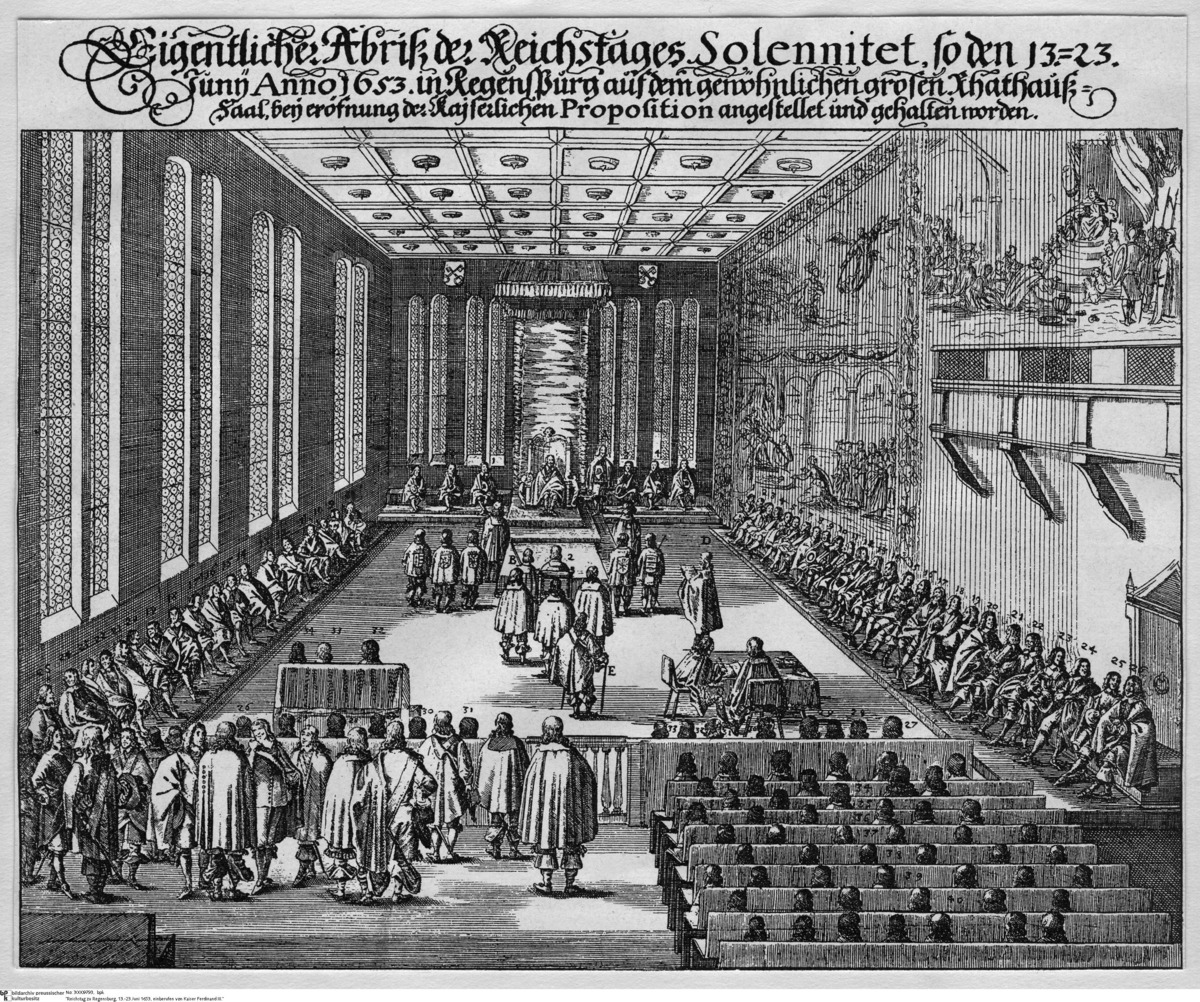Abstract
In the aftermath of the devastating and disruptive Thirty Years War
(1618-48), Holy Roman Emperor Ferdinand III (r. 1637-57) convened the
Imperial Diet [Reichstag] in
Regensburg in 1653. His initial aim in doing so was to settle imperial
obligations that had not been defined by the Peace of Westphalia in
1648. The Diet confirmed the right of the territorial princes to raise
funds from their subjects to maintain fortresses and garrisons, and thus
enabled them to establish standing armies independent of the estates. It
rejected a proposal put forth by Ferdinand that would have required all
estates to pay imperial taxes toward common objectives if such taxes
were voted for by the majority of the Imperial Diet. Here, resistance by
Brandenburg's Elector Frederick William (r. 1640-88) was an important
factor.
Imperial Diet at Regensburg was dismissed in the middle of 1654. On
the whole, it failed to reverse the fragmentation and relative
powerlessness of the Empire. The Diet only gained renewed effectiveness
as an imperial political tool in 1663, when it was transformed into the
Permanent Imperial Diet under Ferdinand’s son and successor, Emperor
Leopold I (r. 1658-1705). The Permanent Imperial Diet met regularly in
Regensburg until the dissolution of the Holy Roman Empire in 1806.
This engraving, one of two motifs from a contemporary leaflet, shows
the imperial estates before the emperor at the Regensburg city hall. By
1663, this Gothic structure had become the fixed meeting place for the
Permanent Imperial Diet. The caption at the top of the engraving reads:
“Actual sketch of the solemnities of the Imperial Diet, on 13-23 June in
the year 1653 in Regensburg in the usual Great Hall in City Hall, made
at the opening of the Emperor’s Proposition.” [“Eigentlicher Abriß der
Reichstages Solennitet, so den 13.=23. Junij Anno 1653 in Regensburg auf
dem gewöhnlichen großen Rhathauß=Saal, beij eröfnung der Kajserlichen
Proposition angestellet und gehalten worden.”]
